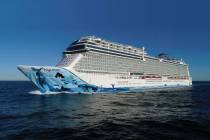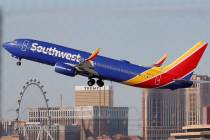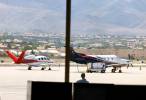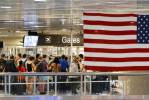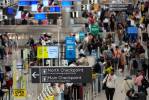Unique Japanese airport terminal makes you look down, not up
TOKYO — 30 million passengers. By any airport's standards, that's a lot of people. A lot of bags to check in, mouths to feed and customers to keep happy.
That's the number Narita, Japan, handles every year. Despite losing some of its luster to sister airport Haneda, which recently swooped in to claim a slice of its sibling's long haul market, Narita is still the busiest airport in the country.
It's only fitting then that it should lead the way when it comes to low cost initiatives.
Opening in April 2015, Terminal 3 is something different. Built exclusively for budget airlines, it is the first of its kind for the city.
The architecture (or lack thereof) has got people talking: no grand departure hall, no windows. Instead the showpiece is right under travelers' feet — nearly 1km of running track to guide passengers around the terminal.
"We came up with the idea to create an airport that was nothing like any other," says Nikken Sekkei architect Takao Goto. "One thing about a track is that anybody in the world knows what it is. It's a global symbol."
The airline terminal had less of a budget than most, so there was no place for features such as moving walkways and electrical signs that you would normally expect. Instead to get to your gate, you follow the color coded tracks: blue, the color of the sky, to get you to your gate; earthy red for arrivals, to express a sense of relief — at least according to PARTY, the designer's Japanese creative lab. Lifestyle retailer were also involved, providing furniture in keeping with the terminal's minimal aesthetic.
The designers say they wanted to minimize the confusion and stress which comes with airport travel — good news for the seven and a half million people Terminal 3 can potentially handle.
In Japan budget airlines are relatively new and last year accounted for only 8 percent of domestic travelers. Although the industry is growing it hasn't yet found its feet. As well as being a unique and attractive option for inbound travelers, the new terminal is seen as a much needed springboard into the future for Japan's domestic market, creating a clear alternative to legacy carriers for the people of the world's most populated metropolitan area.


























